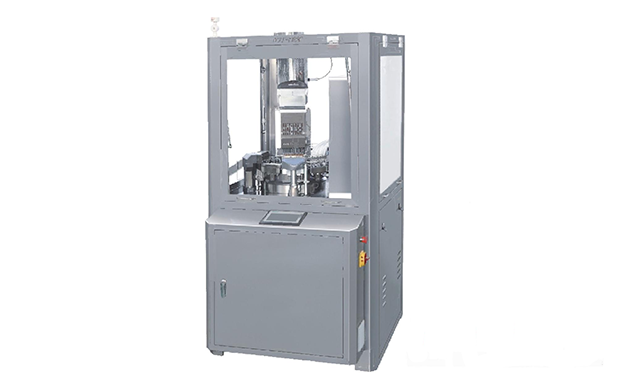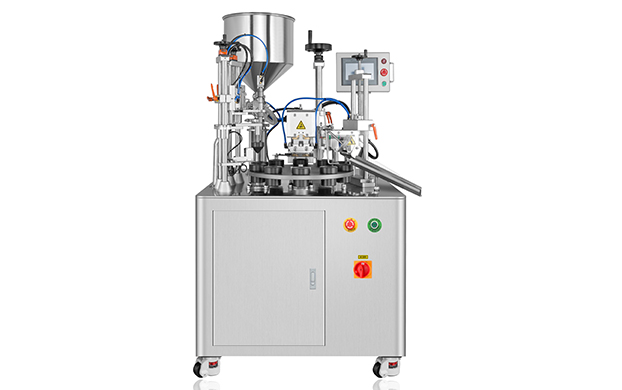How To Better Maintain A Liquid Filling Machine
Time:Mar 2, 2024 Hits:Maintaining is very important for your liquid Filling Machine. A well-functioning machine is the engine of efficient manufacturing, ensuring that each container is precisely filled. Frequent inspections and cleanings prolong the machine’s life and maintain the goods’ high quality and safety. Now let’s explore the essential procedures for maintaining a liquid filling machine and ensuring seamless operations within the liquid packaging industry.
What is a liquid filling machine and how it works?
In the realm of production, a liquid filling machine is an essential piece of machinery, particularly for those in the beverage, pharmaceutical, or personal care product sectors. By automating the filling process, it ensures accuracy and productivity. These devices function flawlessly, encouraging a more efficient manufacturing line.
To measure and dispense precise amounts of liquid into containers, the liquid filling machine essentially uses several valves and pumps. First, the containers are put on a conveyor belt, which transports them to the filling station. The device accurately administers the necessary amount of liquid into each container at the filling station. In addition to saving time, this automation lowers the filling process’ margin of error.
The ability of the liquid filling machine to monitor the volume of liquid poured and manage the flow rate is its core functionality. Because of its advanced mechanism, the machine guarantees consistency in filling levels, contributing to the overall quality of the final product.
Importance of maintaining a liquid filling machine

The significance of maintaining a liquid filling machine breaks down into the following important points:
- Equipment Longevity: The lifespan of the liquid-filling equipment gets longer by routine maintenance. Reduces the need for frequent replacements by preventing premature wear and tear of moving parts.
- Consistent Product Quality: Makes certain that liquids are accurately and precisely dispensed into containers. It helps create a strong brand image, improves product uniformity, and satisfies quality requirements.
- Effective production: Reduces the possibility of unforeseen malfunctions, avoiding unscheduled outages. Minimizes delays and monetary losses by encouraging a steady and uninterrupted flow of production.
- Workplace Safety: Makes a safer workplace by lowering the possibility of spills or mishaps. Emphasizes putting safety first and safeguards the workers using the equipment as well.
- Cost Control: Large faults happen in part via prompt repairs and preventive maintenance. Reduces the need for expensive maintenance or replacements, which helps with cost control.
- Compliance with Regulations: Compliance with safety and quality needs by routine inspections and adherence to maintenance procedures. Demonstrates a dedication to adhering to industry rules, gaining the market’s confidence.
- Predictable Budget: Companies with a consistent budget are more likely to place a high priority on maintenance. Prevents unanticipated financial burdens brought on by equipment breakdowns or emergency repairs.
- Sustainability and Reliability: Demonstrates the liquid filling machine’s dependability as a tool for the manufacturing process. Increases the company’s overall sustainability by reducing interruptions and preserving business operations.
How to maintain a liquid filling machine?
We will guide you through the crucial weekly and daily checks to better maintain your liquid filling machine.
-
Daily Checks
Visual Inspection for Leaks or Damage
Examine your liquid filling machine visually first thing in the morning to look for any damage or leaks. Examine every part, including the joints, valves, and pipelines. Early problem-solving can save expensive downtime later.
Verification of Fluid Levels
To ensure precise and effective filling, make sure your liquid filling machine contains the appropriate volume of fluid. Check the reservoir’s fluid levels often and adjust as necessary. This easy procedure helps guarantee product uniformity by preventing under- or overfilling.
Examination of Hoses and Connections
Spend a few minutes checking for wear and tear on the hoses and connectors. Replace any broken hoses as soon as possible and tighten any loose connections. This regular inspection assists in stopping leaks and guarantees a smooth flow of liquids through the machine. B.
-
Weekly Checks
Calibration Verification
To ensure accuracy in the filling process, check the calibration of your liquid filling machine once a week. Make sure the liquid gets distributed by the machine in the exact quantity specified by you. To maintain production standards and prevent product waste, adjust the calibration if needed.
Inspection of Seals and Gaskets
Inspect the gaskets and seals for indications of deterioration, wear, or fractures. Leaks and compromised filling process integrity might result from damaged seals. Frequent examination enables you to quickly replace worn-out seals, preserving a safe and effective machine.
Lubrication of Moving Parts
Lubricate moving parts of your liquid filling machine once a week to keep it running properly. lubricating parts such as conveyor belts, gears, and conveyor belts reduces friction, minimises wear and tear, and extends the overall lifespan of your equipment.
Why Regular Maintenance Matters?
Your liquid filling equipment needs routine maintenance for several reasons. First off, it guarantees that your items are always of a high caliber. Avoid containers that are either overfilled or underfilled, which may lower client satisfaction. It also lowers the possibility of unplanned malfunctions, which minimizes downtime and boosts overall production efficiency.
Cleaning Procedures of a liquid filling machine
 A. Cleaning Schedule
A. Cleaning Schedule
Frequency of Cleaning Cycles
Set up a routine for cleaning your liquid-filling equipment. To prevent residues and toxins from building up, daily cleaning is best. Regular cleaning cycles preserve the quality of your goods and your machine’s performance.
Importance of Cleanliness in Preventing Contamination
A good liquid packing business depends on cleanliness. Frequent cleaning keeps cross-contamination at bay, preserving the integrity of your products. Sustaining an immaculate atmosphere also guarantees consumer trust and conforms to industry requirements.
B. Proper Cleaning Techniques
Disassembly and Reassembly Steps
Disassemble your liquid filling equipment gently to start the cleaning procedure. This stage gives you access to every component so you can clean them all thoroughly. Ensuring correct reassembly following disassembly requires adherence to manufacturer specifications.
Use of Appropriate Cleaning Agents
Select cleaning solutions made especially for your liquid filling equipment. These compounds need to remove residues efficiently without endangering the machine or lowering the caliber of your output. Your equipment will last longer if you use the cleaning solutions as recommended.
Attention to Hard-to-Reach Areas
Give extra attention to those hard-to-find crevices and corners that can be home to pollutants. To get into every crevice of your machine, use brushes, swabs, or other cleaning supplies. Keep optimum hygiene standards by thoroughly cleaning locations that are difficult to reach.
Last Thoughts
After learning about liquid filling machine maintenance, keep in mind that successful packing starts with a well-maintained machine. Maintaining proper operations through routine inspections and thorough cleaning improves both customer satisfaction and product quality. Embrace these practices to guarantee top-notch liquid packaging every time


